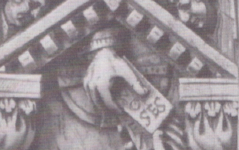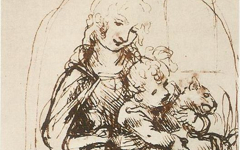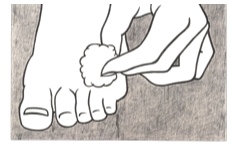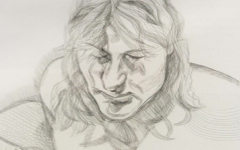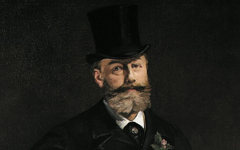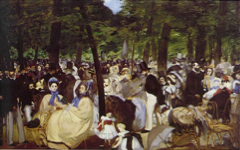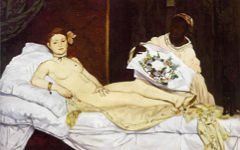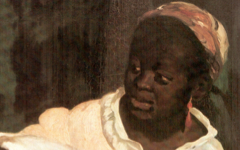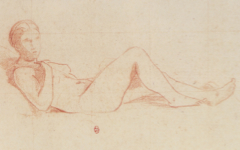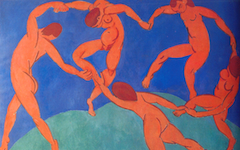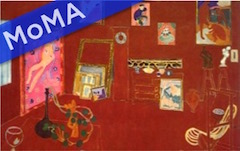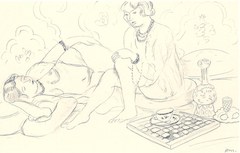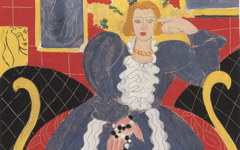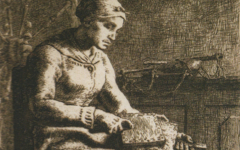Androgyny
While the Renaissance phrase Every painter paints himself uses the masculine to denote both genders, as the English of my youth did too, the artists themselves were under no delusion that their male minds would be sufficient to become like God (see The Divine Artist). They needed a feminine side too (or a masculine one in the case of female artists) because a mind reflecting the cosmos – whether God’s or a visual poet’s – contains both genders as any reasonable thinker since Plato would have known. This is important to grasp because the patriarchal norms of everyday life in the Renaissance, of particular interest to feminist art historians, were markedly different from the intellectual concepts so important to mystical thought.
All Articles (Alphabetical by Artist, then Title)
How an artist, the artist's lover, is Ingres' own androgynous reflection
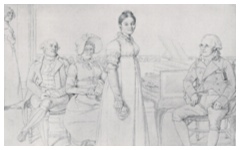
Ingres’ The Forestier Family (1806)
See how artists play with our historical memory and immortalize their own

Isaac Oliver’s Rainbow Portrait of Queen Elizabeth I (c.1600)
Even 20th-century art, seemingly remote from the Renaissance, maintains the same traditions
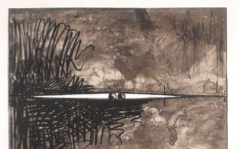
Jasper Johns’ Flag (Moratorium), (1969)
Michael Lobel explains how several of Sloan's paintings of New York street scenes are really allegories on painting
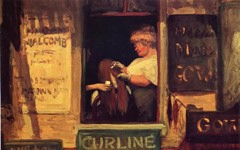
John Sloan’s Hairdresser’s Window (1907)
True artists make their art contemporary while remaining solidly traditional
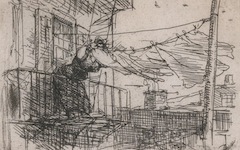
John Sloan’s Hanging Clothes (c.1920)
Everyone agrees that Frida Kahlo painted herself.....but within which tradition? Psychological and surrealist or esoteric?

Kahlo’s Self-Portrait with Portrait of Dr. Farill (1951)
The universal features of Frida Kahlo's art are what links her to the canon, not the details of her private life
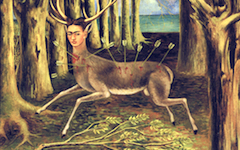
Kahlo’s The Wounded Deer (1946)
History and the politics of the moment never trumps self-knowledge and self-reference as the 'sine qua non' of art

Kollwitz’s “Down with Abortion Clause” Poster (1924)
The most crucial piece of information about the Mona Lisa missing from standard textbooks is that the proportions of the Mona Lisa’s face differ from an earlier version seen in X-rays but are similar to the artist’s own in a well-known self-portrait.

Leonardo’s Mona Lisa (c. 1503-7)
How historical accuracy was not Leonardo's purpose in a portrait

Leonardo’s Portrait of Ginevra de’ Benci (c.1474-8)
How painters can imagine themselves as violinists and other musical performers
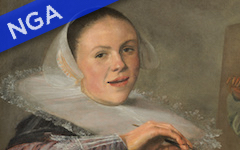
Leyster’s Self-portrait at the Easel (c.1630)
A 20th-century version of medieval angels playing stringed instruments. See how.

Lichtenstein’s Girl with an Accordion (1961)
A famous but much maligned painting has more poetry in it than its critics think

Lord Leighton’s Flaming June (1895)
Once again, see how the hilt of a sword signs the artist's name

Lotto’s Judith with the Head of Holfernes (1512)
See how even a contemporary artist follows the hidden tradition of the great masters

Lucian Freud’s Queen Elizabeth II, Part 1
This early painting by Manet has always troubled interpreters because it seems to make no apparent sense. Its explanation here, though, will help you understand paintings by Manet, Velazquez and other artists too.
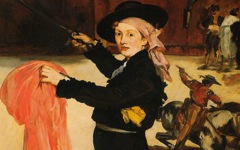
Manet’s Mlle. V in the Costume of an Espada (1862)
See how Manet identifies with a female artist of his own acquaintance, probably without her even knowing

Manet’s Before the Mirror (1876)
Everyone knows that Boating is a masterpiece. Why is it so difficult to explain?

Manet’s Boating (1874)
Find out how Manet's observations of scenes in Parisian cafés are really something else entirely

Manet’s Café-Concert (1878)
Skating on ice is like drawing lines on the mirrored surface of the artist's mind

Manet’s Skating (1877)
How an unfinished painting is finished and how a horse becomes an easel

Manet’s The Horsewoman (1875)
See how smoke and mirrors turn the outside of Manet's studio into the inside
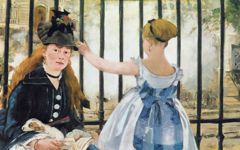
Manet’s The Railway (1873)
There is more to the Tragic Actor than meets the eye. Find out what's there that others cannot see.
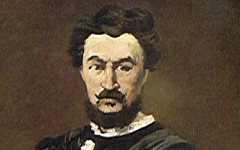
Manet’s Tragic Actor (1865-6) Part 2
Discover how Manet's backgrounds are often "paintings"

Manet’s View of the Universal Exhibition (1867)
An early example of how Manet turns a modern woman, and his future wife, into an artist

Manet’s Woman with a Jug (1858-60)
Unless there are dogs or cats in the picture, we tend to look at the humans more than the animals. Don't. Artists are often animals.
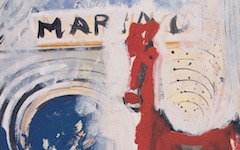
Marino Marini’s Poster for an Exhibition (1959)
Why did Picasso choose this painting for himself? What did he see in it?
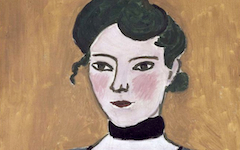
Matisse’s Marguerite (1906-7)
See how Matisse himself appears in even a simple drawing of an unidentified model
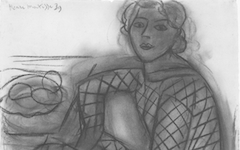
Matisse’s Seated Young Woman in a Patterned Dress (1939)
To see what's in a painting can take a very long time... 15 years, in this case.
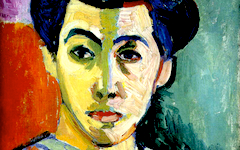
Matisse’s The Green Line (1905)
Arrows in art are often "brushes", especially with inconsistencies on the literal level

Memling’s Martyrdom of St. Sebastian (c.1475)
Find out what the studio and Golgotha have in common
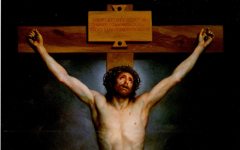
Mengs’ Christ on the Cross (1761-9), Goya’s and Francis Bacon’s too
There's probably more unseen in Michelangelo's Sistine Chapel than has ever been known....
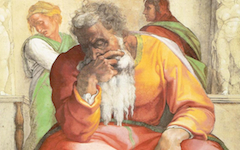
Michelangelo’s Sistine Ceiling: Jeremiah (c.1509-10)
Michelangelo's first great masterpiece is widely misunderstood. Like art in general, it is an expression of the creative moment.
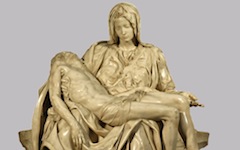
Michelangelo’s Vatican Pieta (1498-99)
Discover how you can unlock layers of meaning from a relatively simple composition
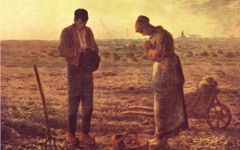
Millet’s The Angelus (1857-9) and other works
© Simon Abrahams. Articles on this site are the copyright of Simon Abrahams. To use copyrighted material in print or other media for purposes beyond 'fair use', you must obtain permission from the copyright owner. Websites may link to this page without permission (please do) but may not reproduce the material on their own site without crediting Simon Abrahams and EPPH.
